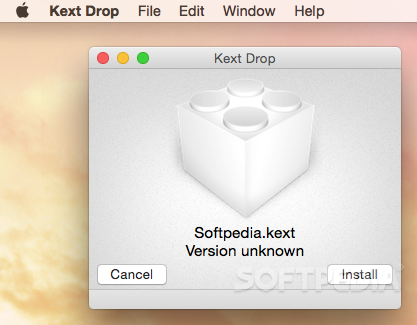What is Heimdall?
Heimdall is a cross-platform open-source tool suite used to flash firmware (akaROMs) onto Samsung mobile devices.
Heimdall is a cross-platform open-source tool suite used to flash firmware (aka ROMs) onto Samsung mobile devices. ## Supported Platforms Officially, AMD64/x86. Open a terminal and navigate to the directory you extracted Heimdall to. Enter the following commands to compile and install Heimdall Frontend: $ cd heimdall-frontend $ qmake heimdall-frontend.pro Open Finder and navigate to the heimdall-frontend sub-directory. Feb 02, 2015 Joined Jul 3, 2014 Messages 934 Motherboard Dell XPS 9360 (KabyLake R) CPU Intel i7 8550U Graphics Intel UHD 620 Mac.
How does it work?
Heimdall connects to a mobile device over USB and interact with software runningon device known as Loke. Loke and Heimdall communicate via the customSamsung-developed protocol sometimes referred to as the 'Odin protocol'.Low-level USB in Heimdall is handled by the popular open-source USB library, libusbx.
Why 'Heimdall'?
For internal use, Samsung developed their own firmware flashing tool known as'Odin', named after the king of gods in Norse mythology. Loke, the softwarecomponent that runs on the Samsung devices and provides the functionalitynecessary to flash, also seems to be named after an important character in Norsemythology (often translated as Loki). In this vein, our software was named'Heimdall' after the Norse god and guardian of the Bifrost Bridge.
What platforms does Heimdall run on?
Officially - Linux, OS X and Windows (XP, Vista, 7 etc.)
Why use Heimdall when we can use Samsung's tool, Odin?
Aside from being slow and generally unreliable, Odin only runs on Windowssystems. Furthermore, Odin is 'leaked software' that is not officially supportedby Samsung, freely available, or well understood by the community at large.
Is Heimdall safe?
No matter which method you chose, flashing firmware onto your device haspotential for disaster. We test Heimdall with a variety of devices by flashingeach one with several different versions of appropriate firmware. As such webelieve that Heimdall is extremely reliable for the devices that we have tested.However keep in mind, just like any firmware flashing software, Heimdall has thepotential to brick your device if not used correctly.
How do devices get bricked when flashing?
Besides the inherent risks like power outs, accidental removal of the USB cableand the fact that some of Samsung's devices appear to be running somewhatunreliable USB control software; the most common cause is actually a bad USB hub(i.e. faulty USB ports) or a low-quality/damaged USB cable. A failed flash willtypically result in a state that is known as a 'soft brick' and is totallyrecoverable, often by simply trying again. 'Hard bricks' on the other hand, areoften the result of a user error i.e. flashing incompatible bootloaders onto adevice. 'Hard bricks' are technically still recoverable by more advanced means,but your best bet is to visit a certified Samsung repair centre.
Which devices has Heimdall been tested with?
Users have reported success with a wide variety of Samsung's mobile phones andtablets from all around the world. However, we officially test on the followingdevices:
- GT-I9000
- GT-I9100[T]
- GT-I9300
- GT-I9505
- SGH-I727
- SGH-I777
- SGH-I927
- SGH-I797
Enough talk, where can we get it?
The latest release can be downloaded below. Instructions to install and runHeimdall on Windows are included in README.txt, or simply README for OS X andLinux releases.
Please read it!
We distribute Windows, OS X and Linux binaries for 32-bit and 64-bit platforms.Users of other platforms will need to compile from source, or get a hold ofthird-party binary distribution. Keep in mind we can’t verify the integrity ofthird-party distributions, so only download from trusted sources.

I love you, man. Will you have my baby?
No, but we will very gladly accept donations. If you appreciate our work andwould like to support future development please make a donation here. If you don’t use PayPal or would prefer to support us in a different way, then please take alook at some of our commercial offerings.
Advanced Mac OS X users may find it useful to know that KEXT (kernel extensions) can be manually installed. The process of installing kexts manually into OS X is not too difficult if you’re comfortable with the command line, but it is a multi-step process of copying the appropriate .kext file to the appropriate kernel extensions directory, and then using chmod and chown to assign appropriate permissions to the kext so that it will run as intended.
Manually Installing Kext into Mac OS X
You’ll need to use the Terminal to complete the kext install, this process is the same in all versions of OS X:

- Copy the .kext file(s) to /System/Library/Extensions/
- Open the Terminal and type:
cd /System/Library/Extensions/- Type the following commands at the terminal, replacing the kext name with the one you are installing
sudo chmod -R 755 kextfile.kext
sudo chown -R root:wheel kextfile.kext
- Now remove the kext caches:
sudo rm -R Extensions.kextcache
sudo rm -R Extensions.mkext
Heimdall Kext For Os X 7
- Reboot the Mac
Heimdall Kext For Os X Latest
The kernel extension should now be installed. You can query a list of the active kernel extensions in OS X with the kextstat command to be sure, use grep to limit the results.


Similarly, you can remove an item from the same /System/Library/Extensions/ folder to uninstall a kext file, rebooting the Mac again for the change to take effect.
As you can see this is more time consuming than relying on an app installer to place a kext itself, and it’s a bit more complex than the alternative like Kext Drop, so ideally you’ll just one of the installer applications instead, because most kext files are coming from an application installer anyway, right? Nonetheless, if you can’t use an installer app or a kext modifier app for some reason to install a kernel extension, the manual installation method outlined above works great in all versions of OS X.